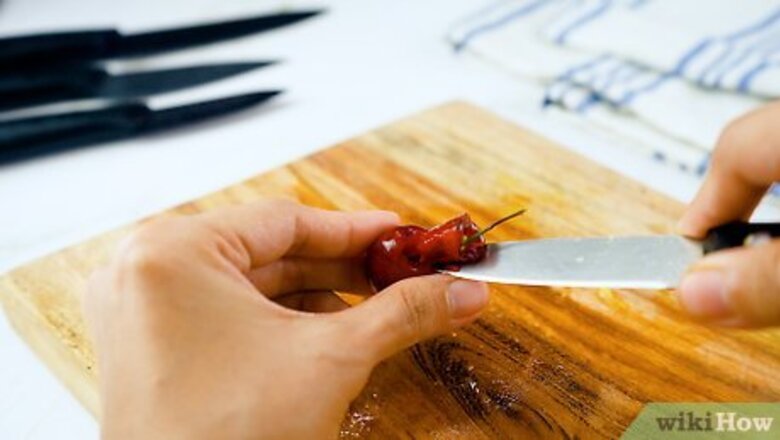
views
Carrying Out Kitchen Tasks
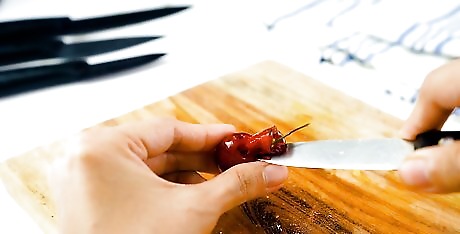
Cut excess pieces off of fruits and vegetables. Even if you’re not peeling the skin off something, a small paring knife is great for cleaning off fruits and vegetables. A larger knife wouldn’t be able to work into small areas without cutting away too much meat. Cutting away the ribs and seed inside a bell pepper is a great task for a paring knife. Slicing stems off of small vegetables like radishes is another good use.
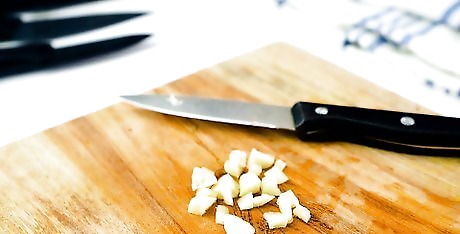
Dice up small ingredients like garlic. A paring knife is perfect for slicing up garlic cloves or other small ingredients. Lay all your ingredients on a cutting board and slice them up with the knife. Watch your fingers when cutting small ingredients. Keep them a safe distance away from the blade and pay close attention to what you're doing. You can also cut long vegetables like celery lengthwise. Lay the vegetable out on a cutting board. Then press just the tip of the blade through it and slice.
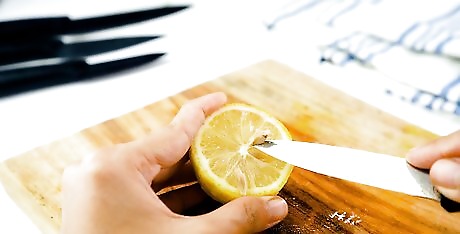
Remove seeds from fruits. Paring knives are small enough to de-seed even the smallest fruits without destroying the meat. Insert the tip of the blade under a seed. Then pop the seed out by pushing up with the blade. Repeat this for as many seeds as you want to remove. A bird’s beak paring knife works best for this task. Use this design for the best results.
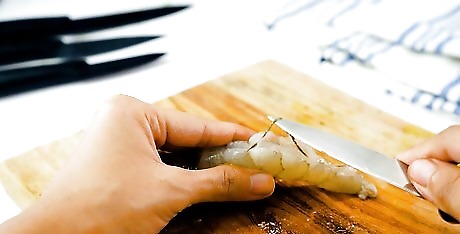
De-vein shrimp. A shrimp’s intestine runs down its back section. Although it is harmless and mostly tasteless, the intestine sometimes ruins the presentation. Take the shrimp out of its shell. Then use the tip of the knife to make a thin slit down its back, exposing the brown intestine. Insert the blade underneath the intestine and work it up gently. Use the blunt side or back of the knife to work up the intestine. The sharp edge will rupture it. You can use this knife to de-vein other shellfish as well. Lobsters and crayfish have veins running down their midsections. Break through the shell and insert the knife to work the vein out.
Peeling Fruits and Vegetables

Wrap your fingers around the handle and face the sharp section towards you. The basic paring knife grip uses 3 or 4 fingers on the knife handle and leaves your thumb free to rest on the item you’re cutting. Bring your index finger just below the base of the blade and grab the knife at this point. Keep the sharp part of the blade pointed towards you. For added control, some chefs actually touch the blade with their index finger. Doing this without cutting yourself takes a lot of skill, so only try it if you’re experienced. Don’t squeeze tightly when gripping the knife. Use a firm grip but leave it loose enough so you can maneuver the knife. Grip the knife with your dominant hand for the most control.
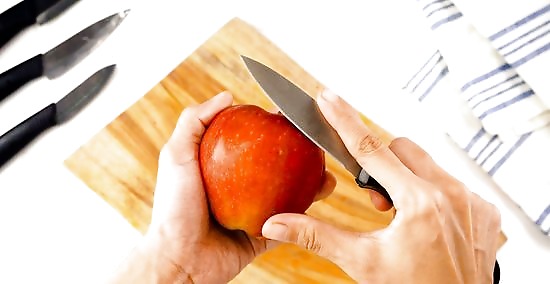
Press the food you’re peeling against the blade with your other hand. Grab the food with your non-dominant hand and press it against the blade. Keep the blade at a slight angle against the food so when you start cutting, the knife only takes off the skin. Rest the thumb from your knife hand on the food. This keeps the food stable while you cut it.
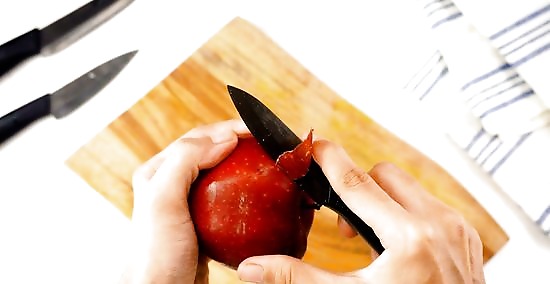
Push the blade towards your body to peel the skin. Plant your thumb firmly onto the food and apply gentle pressure with the blade. Once the blade breaks the skin, it’s easy to work forward. Bring the knife towards your body, using your thumb to work it along. Stop and move your thumb back when the blade gets close to it, then cut more. Keep your fingers out of the blade’s path. Hold the food by its sides so your fingers aren’t in the way. Keep your thumb a safe distance from the blade and move it backwards before cutting more. Spin the food slightly with your non-dominant hand to work it against the blade. Work slowly in the beginning. It takes time to master this technique.
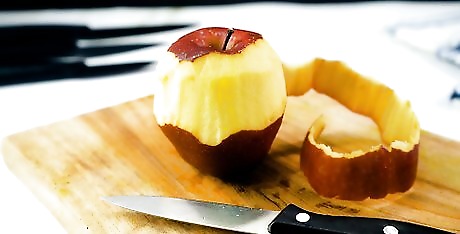
Work around the fruit or vegetable in rings. When you get the knife moving, work around the item you're cutting until you reach the spot where you started cutting. Remove that layer of skin and then move to a different spot. Continue working down the fruit or vegetable until you've removed all the skin. If you can't make it all the way around the fruit or vegetable at first, that's okay. Just cut off smaller pieces. Skilled chefs can peel off all the skin without pulling the knife away. This takes a lot of practice, so don't worry if you can't do it right away.
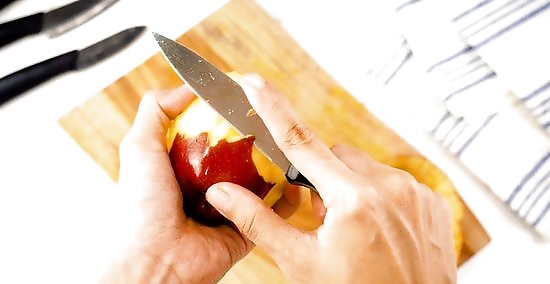
Readjust the knife if the blade takes off more than the skin. Keep an eye on the knife and monitor how deep the cuts are. If the meat from the fruit or vegetable starts coming off, then you’re cutting too deep. Take the blade off and readjust. Align it just below where the skin hits the meat so you only peel the skin. If you accidentally take off too much meat under the skin, you can cut away the additional meat later on so it doesn’t go to waste. This technique also works if you don’t want to remove all the skin from something. You might just want a lemon peel, for example.
Finding the Right Paring Knife

Look for a knife blade between 2.5 in (6.4 cm) and 4 in (10 cm). This is the average size for paring knives and should cover most of your needs in the kitchen. The exact size depends on what you plan on using the knife for. To slice up small vegetables like carrots and radishes, look for a smaller knife around 2.5–3 in (6.4–7.6 cm). For peeling fruits and vegetables, choose a knife closer to 4 in (10 cm). If you’ll be doing several different tasks in the kitchen, consider getting 2 knives, a longer and shorter one. If you only want to get 1 knife, choose a 3.5 in (8.9 cm) blade for general purpose use.
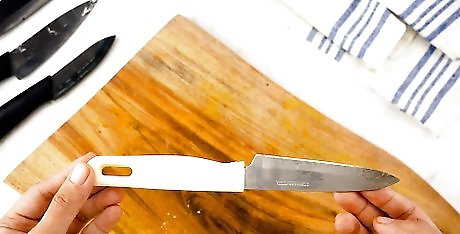
Get a knife with a stamped plastic handle for a lighter weight. Paring knives come with different construction varieties. A low-cost option is a stamped plastic handle. These are lightweight compared to other types. If you prefer a lighter knife or your hand tires easily, a stamped handle is best for you. Stamped plastic handles are also less durable than other varieties. If you do a lot of cooking or want your knife to last a long time, consider a different model.
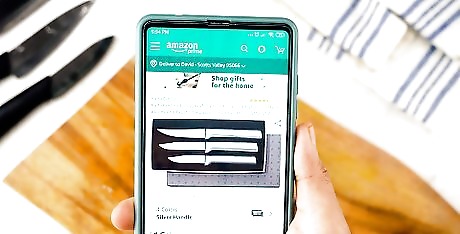
Try a forged handle for a heavier, more durable option. The other main option for your paring knife is a forged metal handle. This type is much more durable than stamped plastic. It’s also heavier, so if you like a knife with more weight, this is a better choice. Knives with forged handles are also more expensive. If you’re shopping on a budget, a plastic handle may be best.
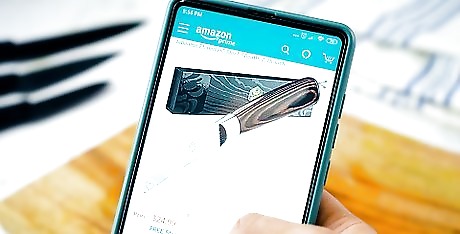
Choose a bird’s beak knife for more precision cuts. A bird’s beak is a type of paring knife with a curved blade. The blade is usually on the shorter side, 3 inches (7.6 cm) max. The curve makes it easier to make small cuts. If you plan on making designs in fruit or cutting very small pieces, consider getting a bird’s beak type. A bird’s beak doesn’t work as well for peeling fruits and vegetables. Choose a straight blade for this task.



















Comments
0 comment